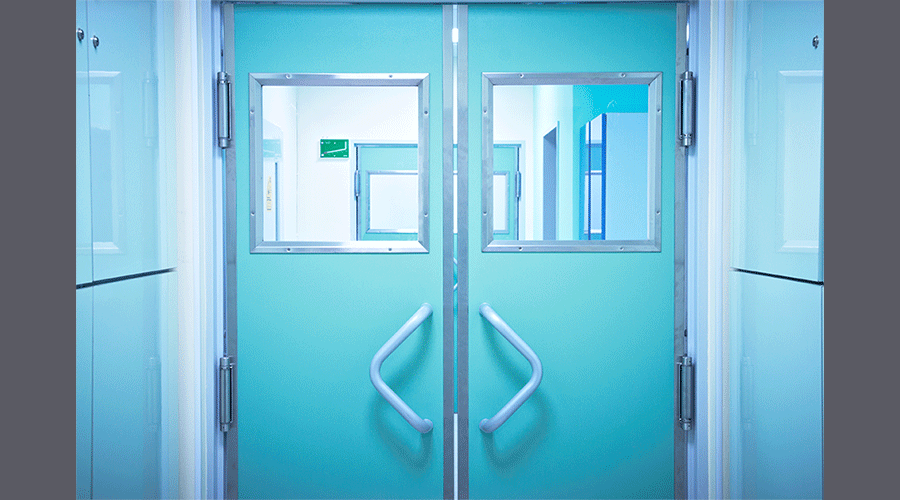
From lockouts to security breaches, products play an important role in the safety of facilities.
Doors and door hardware often go unnoticed in healthcare facilities until something goes wrong. Such issues might seem trivial, but whether it is being locked out, doors getting jammed or being the cause of a security breach, doors and door hardware can have a range of impacts on the safety of facilities.
“Many large healthcare providers have multiple systems that control a variety of applications,” says Uriah Parker, project sales manager – Midwest with Allegion. “On the door hardware side, features that allow an extra layer of electronic security for pharmaceutical rooms for audits tracking drugs and patient safety mitigate the risk that would be involved. The future is around the experience of the patient and the efficiency of resources and to some degree infection control. A patient can arrive at the parking lot and move through the building to their appointment seamlessly with fewer human interactions to help reduce contact transmission. Further, mobile access control technology allows patients to be checked in and ready by the time they arrive at their elected surgery.”
Beyond the legal requirements that go into designing a facility, healthcare facility operations pose a unique set of challenges. It is crucial that facilities managers understand that access points affect the way people, materials and even information travel throughout the building. Because of this impact, doors and hardware are among the most critical components of their physical infrastructure.
“While the healthcare industry is slowly moving towards a digital transformation, traditional lock-and-key systems are still widely used,” says Paul Canon, industry leader – healthcare with Salto Systems. “However, modern electronic access control systems for door security and safety are much more effective, efficient and convenient. Facility managers considering electronic access control should understand that these systems are exponentially more secure than traditional mechanical locks. Modern access control systems are far more than just locks, they are valuable data and information systems that offer audit capabilities, flow analysis, space utilization and planning capabilities and more. Not to mention, electronic locks provide secure digital credentialing that can eliminate the costs and security risks associated with mechanical keys and key replacement.”
There are many things to consider when choosing a door for a facility. Not only does it have to comply with building codes. Managers also need to determine if it will be in a high-traffic area or if it leads to a patient’s room. The location also affects the amount of routine maintenance needed on the door and hardware to extend longevity. Something as routine as maintaining door hardware can reduce a facility’s liability in high-stakes environments.
“Doors and door hardware is very important. It is very important to get the right door and hardware for the application need,” says Ashley Estrada, product manager with Horton Automatics. “For example, with applications where clean rooms are to be used, you will need a door that helps control airborne particulate contamination including germs. Most entrances need doors that meet ADA requirements. Depending on the location of the entrance and traffic flow an automatic door with overhead presences sensors may be sufficient. For an entrance with little traffic an automatic swing door with a touchless switch may work better.”
Mackenna Moralez is the associate editor of Healthcare Facilities Today




















